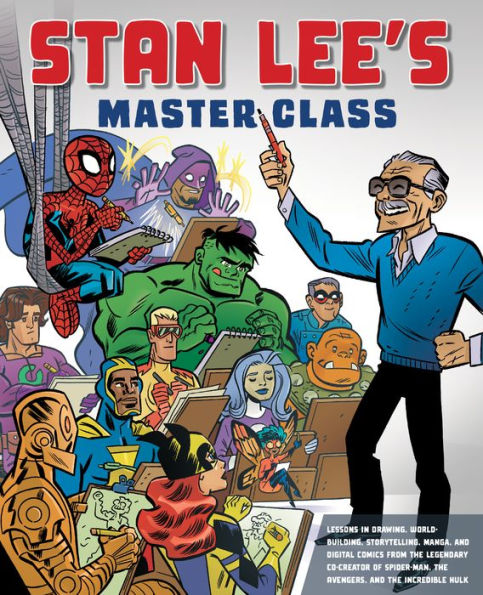Read an Excerpt
Preface
Hey, True Believers! We meet again.
I know, I know; you’re scratching your head and wondering what’s left to be said about drawing comics that we need a new volume. A Master Class, no less. What’s a “Master Class,” you ask? Beats me, having never taught one before, but having worked with the masters of storytelling for eighty years, I have picked up more tips and techniques than could fit in just one volume. So, if you haven’t yet read Stan Lee’s How to Draw Comics, start there. After devouring that and practicing your skills for a while, you’ll be ready for what follows.
While the techniques have grown increasingly sophisticated since the days we were lucky enough to have pencil and ink for the art, the need to tell a clear, exciting story has not changed in the slightest. Readers need to know who is in each panel, what they’re doing, and where they’re doing it. The exciting part comes next, making it visually compelling. I developed the instincts to find the most dramatic and exhilarating angles and perspectives so the reader had no choice but to turn the page. Back before you could easily attend conventions or even take courses on graphic storytelling, John Buscema and I first put our joint experiences together in How to Draw Comics the Marvel Way, a classic if ever I saw one. There, we show how you can take a perfectly good, but ordinary, moment and find a way to capture the reader’s attention and add some drama.
When I next cobbled together my thoughts in the first book in this series, I expanded the examples by showing you how the greatest artists throughout comics history told their stories, designed their characters, and made their fantastic worlds feel familiar. While I still go back to the classic pioneers, from Jack Kirby to Jim Steranko, I also make sure to include current favorites here. As you study the following pages, you will see how the styles have grown more sophisticated and realistic, but also pay heed to the larger-than-life needs of our kind of storytelling.
This time around, I go even further by including the internationally acclaimed and highly influential Japanese style of comic art, known as manga. We’ll examine the styles: chibi (cute), shoujo (romance), shounen (action), furry friends and magical creatures, and, of course, monsters.
In every case and with every style, there remain certain basics that cannot be ignored, especially if you want to earn the title of “master artist.” You have to talk the talk and walk the walk, my friend, and here I take you through the current terminology and tools of the trade. Man, if I had a laptop, I could have dialogued pages during the 1965 blackout rather than write by candlelight. You guys have it easy today, let me tell you.
Again, regardless of the style you develop, whether you’re influenced by Van Gogh or McFarlane, Kirby or Cho, you still need to understand the basics of anatomy, especially when putting your characters into action. I’ll walk you through a dozen useful body poses to get you started. But that’s not all! No, effendi, I also tackle the challenging, but necessary, perspective to ground your action in a realistic setting. We’ll start you easy with one-point perspective but get you up to experimenting with curvilinear perspective and creating depth.
Now, I mentioned “realistic” a few lines ago, but clearly, not every story is set in New York City. Through the years, I’ve had to help imagine countless alien races from awe-inspiring galaxies and new civilizations. I’ll share some of the tips I’ve learned along the way from lifeforms to machinery, architecture to clothing. After all, the Skrulls couldn’t buy off the rack at Macy’s, could they?
Let’s say you’ve diligently worked your way through all this and are ready for more. Then we begin to put it together as you tell your story. For me, pacing is incredibly vital, so the action rises and falls, with each page forcing you to turn to the next. You’ll learn how to design a page and wrench every drop of emotional drama out of each panel. You have to make sure the reader is rooting for the hero, hissing the villain, and hoping Earth survives to see another sunrise.
Let’s say you’re an artist but don’t think you’re ready to tell your own stories. No problem. For my Master Class students, I provide you with three practice scripts so you can practice without worry.
Now, books like this don’t happen without a little help. This time, Dynamite Entertainment recruited Keith Dallas, David Roach, and Robert Greenberger to help me take you through the ins and outs of contemporary comic book drawing. Follow these tips and guidelines, learn to walk before you run, and in due time, you will feel like a master. The results are something I can only look forward to so for now, I wish you the very best of luck.
Excelsior!
Stan




